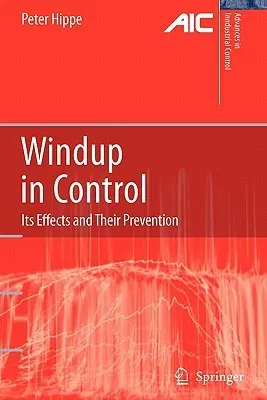Actuator saturation is probably the most frequent nonlinearity
encountered in control applications. Input saturation leads to
controller windup, removable by structural modification during
compensator realization and plant windup which calls for additional
dynamics.
Peter Hippe presents solutions to the windup prevention problem for
stable and unstable single-input-single-output and
multiple-input-multiple-output (MIMO) systems. The solutions use only
standard tools for the investigation of linear systems - state
equations, transfer functions, etc. The stability tests are based on
well-known criteria for loops consisting of a linear part with isolated
sector-type nonlinearity. Less rigorous engineering solutions which
guarantee improved performance but without strict proof of stability are
also demonstrated.
MIMO systems in which the behaviour of controlled variables is decoupled
require specific input vectors and so also suffer problems of
directionality when their input signals saturate. This can have
extremely deleterious consequences for closed-loop behaviour. Windup in
Control offers an exact solution to this directionality problem for
stable and unstable systems. The methods laid out in this survey also
integrate solutions for applications with rate-constrained actuators and
for bumpless transfer from manual to automatic during system start-up or
in override control. Developments in control methods are always
supplemented by easily repeated numerical examples.
Academics doing control-related research in electronics, mechanics, or
mechatronics and engineers working in the process industries will find
this book an extremely useful overview of systematic windup prevention
for all kinds of systems. It also has valuable insights to offer the
graduate student of control.


